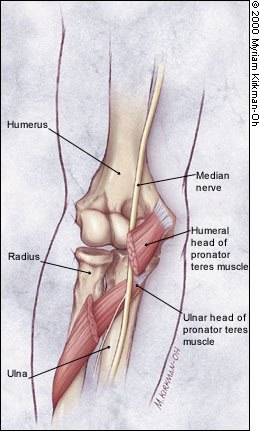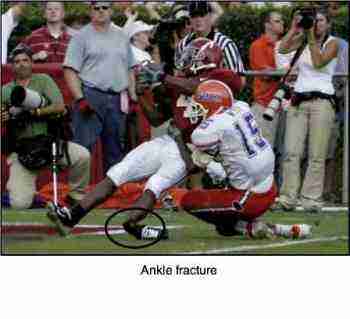College research topics
College Research Topics requests conditions that puzzle chiropractors.
This is a page where students may find interesting research ideas from the great pool of doctors in the field.
Chiropractors are invited to submit their ideas via CONTACT, things that puzzle them, and they wish someone would research the topic. Perhaps some of them have already been done.
Dr James Winterstein from NUHS has timeously reminded us, quoting Charles Pierce to question.
What we believe, must be true simply
- because we believe it to be true.
- because some authority whom we trust says it's true.
- because it stands to reason and it makes sense, therefore it must a priori be true.
- because objective methods outside my realm of influence have been used to demonstrate the truth of it.
"Imagination is more important than knowledge."
- Albert Einstein.
The transition from trust in rigid dogma, to blind belief that every pearl that fell from a Palmer's tongue, to the age of reason and finally to the scientific method has been no easy passage for me, and I suspect for many chiropractors trained in the days before the great explosion of scientific research.
I for one no longer fear the scientific method. It has validated many of our Chiropractic beliefs, but yes it has knocked some sacred cows. But if we are basing our treatment on that which is false, in effect a lie.
So, doctors in the field, please submit the things that puzzle you, and would like to see researched to college research topics via contact.
Reading both medical and chiropractic literature one is continually reminded of the importance of integrity in reporting. Using murky science to back up an opinion, rather than formulating our opinions based on honest science reporting, leads only us and our professions into disrepute.
It would be fascinating to find out whether two groups of patients treated identically responded differently, and stayed with the chiropractic programme differently, if given a copy of Dr Sportelli's marvellous book Introduction to chiropractic.Pull downs
So many folk at the gym get neck and arm pain from doing pull down? But what's the incidence, and what are the possible mechanisms?
Popping one's own neck
There's anecdotal evidence that manipulation of joints with distraction causes deterioration of the hyaline cartilage; frequency would be a factor too.
Who is going to research whether those who pop their own necks more than say five times a day develop more degenerative change in the joints of Luschka than a control group with also with pain, but consult a chiropractor? And is the progression to a full blown brachial neuralgia more frequent?
Introduction to Chiropractic
Lumbar Spondylosis casefile
Almost every second patient in many chiropractic clinics is suffering from lumbar spondylosis. It comes in the main from only lower back injuries that were not well managed and rehabilitated. Joints that are not in motion become arthritic.
Google appears to take a dim view of too many links, so if you are looking for more information about subjects highlighted in bold,
such as the lumbar spondylosis casefile above, then you will need to
copy and paste it into the Site Search function in the navigation bar on
your left.
Sacroiliac Joint inflammation
Medical researchers have now proved conclusively that sacroiliac joint inflammation is a major cause of lower lumbar back pain, including pain radiating to the lower leg. Results with infiltration of the joint are reasonably impressive. What researcher is going to come up with college research topics that prove that Chiropractic can get better results, more safely, and more cheaply?
Read more about SACROILIAC JOINT INFLAMMATION ...
Carpal tunnel syndrome
I treat the CTS with considerable success but there is no (to my knowledge) research confirming the effectiveness of Chiropractic for CTS.
My treatment protocol:
- Mobilisation of the carpals.
- Stretching of the Median n. in the wrist.
- Evaluation of the Pronator teres muscle.
- Evaluation of the first rib and lower cervical spine.

Carpal tunnel Syndrome ...
Thoracic Outlet Syndrome ...
Lower cervical facet anatomy ...
"Where there is much desire to learn, here of necessity will be much arguing, much writing, many opinions; for opinion in good men is but knowledge in the making."
John Milton, 1608 - 1674
Meralgia paresthetica
MP is a not uncommon finding in general practice, with pain and sensory changes in the upper thigh. Classically thought to be an impingement of the LFCN in the groin (with its first cousin the Femoral n. producing a similar unnamed syndrome but with possible motor changes) it has virtually no confident treatment protocol in the medical or chiropractic worlds.
Yet a chiropractic protocol addressing the groin, the sacroiliac joint and the upper lumbar spine (in my experience) is particularly successful in treating this very disabling condition.
But who is going to be the first to confirm it? Perhaps not the place for a College Research Topic, however simply measuring the incidence of MP in the chiropractic clinic would be an important start.
The elderly patient
Whilst there is now strong Chiropractic research confirming that both a high-velocity, low-amplitude adjustment and Cox traction are safe and significantly more effective than medication in the treatment of chronic LBP in the patient over 55, there is no research confirming how safe and effective that treatment is in the elderly patient.
I would dearly love to see someone do a blinded RCT comparing the Thompson Drop high-velocity, low-amplitude protocol, with and without a home exercise program, with a conservative medication protocol, in the 70 + patient.
A suitable outcome measure might use the Roland Morris disability
Questionaire, the Fear Avoidance Back Questionaire of current
disability, the VAS pain severity questionaire and the the physical
function SF-36 questionaire.
Chiropractic Research ...
Slump Test for sciatica
The Slump test is probably the orthopaedic test that I use most
frequently on a daily basis. However it does invite certain questions
that to my knowledge have not been answered. Read more about the Flip test for sciatica.
In particular, why does the Slump Test sometimes produce a result quite different, and even contradicting the classic Lasgues and Braggards?
Do you have some of your own puzzling questions to contribute to College Research Topics?
Hip arthritis
What is the association between sacro-iliac fixation and hip arthritis? Is it circumstantial? Is SI-fixation a causative factor as is Leg Length Inequality? Could it be an underlying factor in the failed hip operation. Can failed hip surgery (in terms of pain and disability) respond to SI mobilisation?
Secondly, what is the incidence of Femero Acetabular Impingement Syndrome - stiff, unsymptomatic hips in the young person? Does it lead inexorably to arthritis and an orthotic? Can Chiropractic management, and a change of behaviour, alter this course?
I treat symptomatic FAIS, arthritic and post-surgical hips with considerable success, but I am uncertain of the claims I am making. I believe them to be true, but I would like to see some objective research confirming those beliefs.
Whilst some of this is perhaps for the more experienced practitioner, I believe there is a place for such questions within a College Research Topics column.
- Read more about FAIS … FEMORO ACETABULAR IMPINGEMENT SYNDROME ...
- Read more about Hip Arthritis …
- Read more about Leg Length Inequality …
Ankle joint pain

To my knowledge there is little research confirming the contribution that Chiropractic can make to the second phase of treatment of Ankle Joint fracture.
Recently I have been astounded how well a patient in a very serious ankle joint pain CaseFile responded to the basic principles of Chiropractic, as applied to the ankle. But can those reliably be predicted?
Menstrual cramps and heavy bleeding
A scoliotic patient whom I had been treating for six months for chronic low back made this statement: "When I first consulted you I never told you that I suffered terribly every month with menstral cramps and was in fact on the verge of a hysterectomy. My cramps and heavy bleeding have almost returned to normal to the extent that both I and my gynaecologist now agree that a medical procedure will no longer be necessary. Is it a coincidence that this has happened at the same time as starting chiropractic care?"
Of course I assured her it was certainly no coincidence. I certainly believe that to be true, but am I being disingenuous? Is that statement based on belief or scientifically proven fact?
Please submit your questions to COLLEGE RESEARCH TOPICS via CONTACT.
Starting out Chiropractor
The first year in practice is often what will make or break a young chiropractor. Good mentoring, solid back up, plenty of experience ...
It's vital for any new graduate to start out well, under the guidance of a caring, compassionate clinic director. Some are overbearing, motivated in the main by greed.
Lies, damn lies and statistics
The statistics obviously can be manipulated to falsify the result.
It's for example a sad fact that the only research (as far as I know,
please inform me if you know otherwise) confirming that Glucosamine
Chondroitine sulphate are effective have been funded by the companies
that make the products.
Likewise researchers who came up results calling for alterating the cholesterol levels at which statins should be prescribed, never declared their conflict of interest. The received funding from drug companies that manufacture the drugs.
GLUCOSAMINE CHONDROITIN ...College research topics
College research topics is a site where students may find interesting ideas from the great pool of doctors in the field. It is a good place for the starting out chiropractor to remain focused.
- Home >
- Research Proposal Topics >
- College research topics
Did you find this page useful? Then perhaps forward it to a suffering friend. Better still, Tweet or Face Book it.
